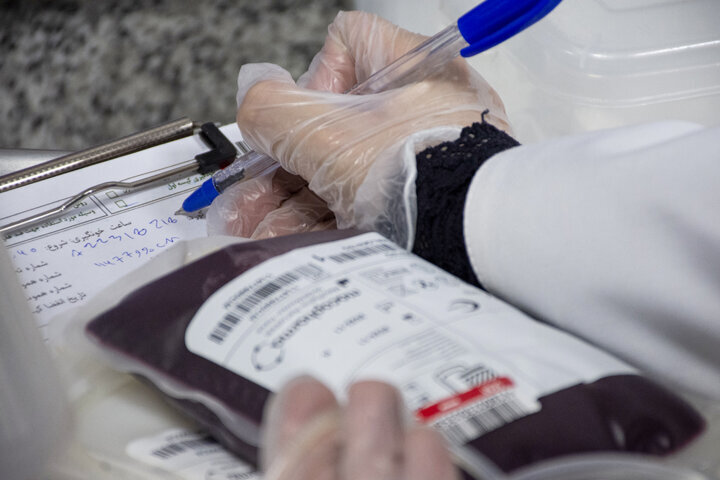Blood donation rate at 26 per 1,000 people

TEHRAN - The average blood donation rate in Iran is 26 per thousand people which places the country in a good situation among other countries.
According to the World Health Organization, the median blood donation rate in high-income countries is 31.5 donations per 1000 people. This compares with 16.4 donations per 1000 people in upper-middle-income countries, 6.6 donations per 1000 people in lower-middle-income countries, and 5.0 donations per 1000 people in low-income countries.
Of the 118.5 million blood donations collected globally, 40% of these are collected in high-income countries, home to 16% of the world’s population.
In low-income countries, up to 54 % of blood transfusions are given to children under 5 years of age; whereas in high-income countries, the most frequently transfused patient group is over 60 years of age, accounting for up to 76% of all transfusions.
Based on samples of 1000 people, the blood donation rate is 31.5 donations in high-income countries, 16.4 donations in upper-middle-income countries, 6.6 donations in lower-middle-income countries, and 5.0 donations in low-income countries.
An increase of 10.7 million blood donations from voluntary unpaid donors has been reported from 2008 to 2018. In total, 79 countries collect over 90% of their blood supply from voluntary unpaid blood donors; however, 54 countries collect more than 50% of their blood supply from family/replacement or paid donors.
Blood transfusion saves lives and improves health, but many patients requiring transfusion do not have timely access to safe blood. Providing safe and adequate blood should be an integral part of every country’s national health care policy and infrastructure.
WHO recommends that all activities related to blood collection, testing, processing, storage, and distribution be coordinated at the national level through effective organization and integrated blood supply networks. The national blood system should be governed by national blood policy and legislative framework to promote the uniform implementation of standards and consistency in the quality and safety of blood and blood products.
Of the 118.5 million blood donations collected globally, 40% of these are collected in high-income countries, home to 16% of the world’s population.
Only 56 of 171 reporting countries produce plasma-derived medicinal products (PDMP) through the fractionation of plasma collected in the reporting countries. A total of 91 countries reported that all PDMPs are imported, 16 countries reported that no PDMP was used during the reporting period, and 8 countries did not respond to the question.
In the past Iranian calendar year, which ended on March 20, some 2.223 million blood donations were registered across the country, an increase of 9.3 percent compared to the year before.
North Khorasan, with an increase of 34 percent, took first place in the growth of blood donation in the country.
Ilam province, with an increase of more than 25 percent, and Lorestan, with an increase of more than 23 percent, took the second and third places in the growth of blood donation, the Blood Transfusion Organization spokesman Bashir Hajibeigi said.
By registering 369,523 donations, Tehran province has the highest amount of blood donation in the country.
Donors who successfully donate blood twice or more within 12 months are considered continuous donors.
Iran is among the countries of the Eastern Mediterranean region as a reference in the field of blood donation activities.
While blood donation in 70 countries still depends on replacement or paid donors, Iran is the first country in the region that has enjoyed voluntary blood donation by 100 percent since 2007.
Iran currently has the highest blood donation rate in the Eastern Mediterranean region, so out of 9.9 million blood donation units in this region, more than two million belongs to Iran.
Also, the index of blood donation is 25 per 1,000 populations, while in the member states of the Eastern Mediterranean region, this number is 14.9 per 1000.
There are currently 178 blood donation centers in the country, with Fars, Khorasan Razavi, Khuzestan, Tehran, and Mazandaran provinces having the largest number of blood donation centers, he stated.
World Blood Donor Day takes place on 14 June each year. The day provides an opportunity to call to action governments and health authorities to provide adequate resources to increase the collection of blood from voluntary, unpaid blood donors and to manage access to blood and the transfusion of those who require it.
MG
Leave a Comment